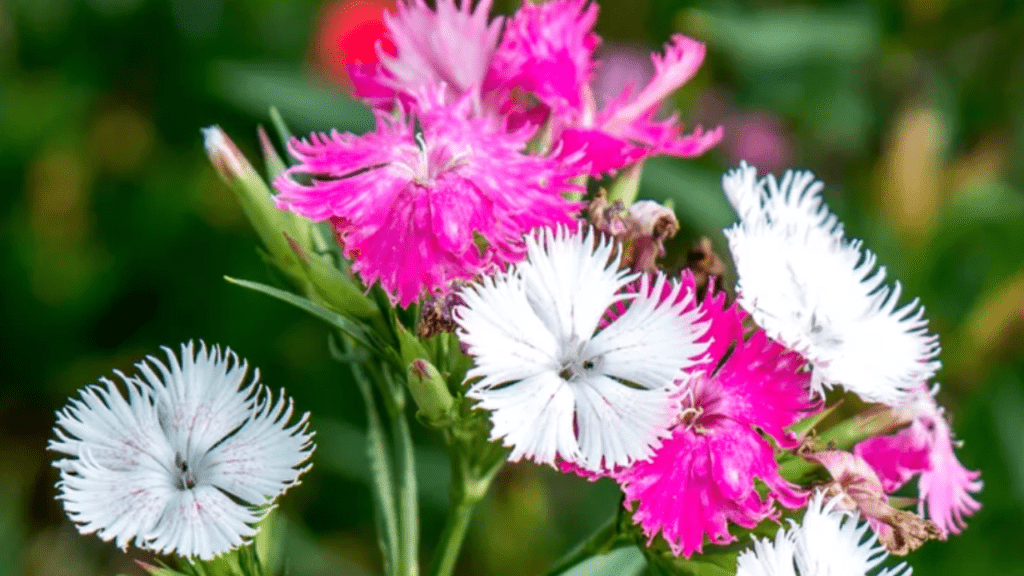
How to Plant and Maintain Your Dianthus Flowers
Dianthus flowers are a beautiful addition to any garden, but they require specific care and maintenance to thrive. In this article, we’ll walk you through the step-by-step process of planting and caring for your Dianthus flowers, including tips on soil, watering, and sunlight requirements. By following these guidelines, you can ensure that your Dianthus flowers bloom beautifully and add a pop of color to your garden.
Table of Contents
ToggleOverview of the Dianthus Flower
Dianthus flowers, also known as “pinks,” are a popular garden plant known for their vibrant, fringed flowers and clove-like fragrance. They come in a variety of colors, including pink, white, red, and purple, and are often used in borders, rock gardens, and containers. These hardy flowers can withstand cold temperatures and are known for their long blooming period, making them a great addition to any garden.
How to Plant and Maintain Your Dianthus Flowers
To plant your Dianthus flowers, choose a location with well-drained soil and full sunlight. Ideally, the soil should be slightly alkaline and rich in organic matter. When planting, space the flowers about 12 inches apart to allow for proper air circulation.
Water your Dianthus flowers regularly, keeping the soil evenly moist but not waterlogged. Avoid overhead watering, as this can lead to disease. Fertilize your Dianthus flowers in the spring with a balanced fertilizer to promote healthy growth and flowering.
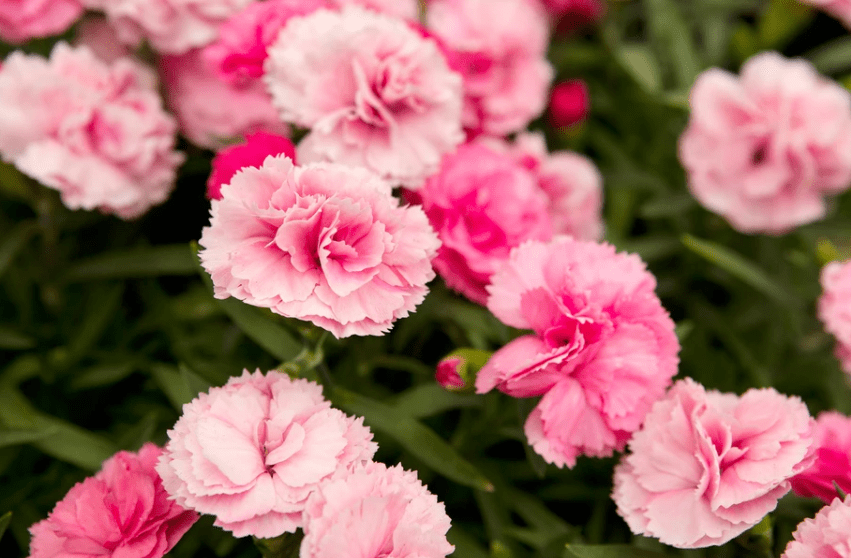
Deadhead your Dianthus flowers by removing faded blooms to encourage new growth and prolong the blooming period. In the winter, cut back the foliage to about 1 inch above the ground to promote healthy regrowth in the spring.
By following these planting and maintenance tips, you can enjoy the beauty and fragrance of Dianthus flowers in your garden for years to come.
Popular Varieties of Dianthus Flower
Dianthus caryophyllus (Carnation)
The Dianthus caryophyllus, also known as the Carnation, is a popular variety of Dianthus flower. When planting Carnations, it is important to space the flowers about 12 inches apart to allow for proper air circulation. It is also important to water the flowers regularly, keeping the soil evenly moist but not waterlogged. Overhead watering should be avoided, as it can lead to disease. In the spring, it is recommended to fertilize Carnations with a balanced fertilizer to promote healthy growth and flowering. Deadheading the flowers by removing faded blooms can encourage new growth and prolong the blooming period. In the winter, cutting back the foliage to about 1 inch above the ground can promote healthy regrowth in the spring. By following these planting and maintenance tips, you can enjoy the beauty and fragrance of Carnations in your garden for years to come.
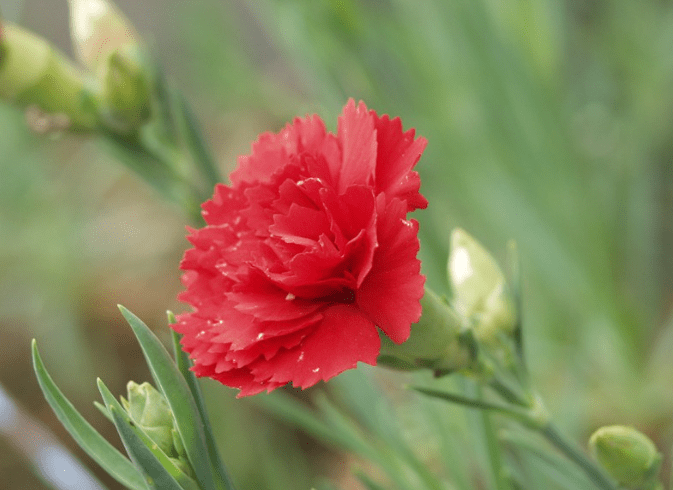
Dianthus barbatus (Sweet William)
is a popular garden flower known for its vibrant and fragrant blooms. When planting Sweet William, it is important to space the flowers about 12 inches apart to allow for proper air circulation, which can help prevent disease. It is also important to water the flowers regularly, keeping the soil evenly moist but not waterlogged. Overhead watering should be avoided, as it can lead to disease. In the spring, it is recommended to fertilize Carnations with a balanced fertilizer to promote healthy growth and flowering. Deadheading the flowers by removing faded blooms can encourage new growth and prolong the blooming period. In the winter, cutting back the foliage to about 1 inch above the ground can promote healthy regrowth in the spring. By following these planting and maintenance tips, you can enjoy the beauty and fragrance of Sweet William in your garden for years to come.
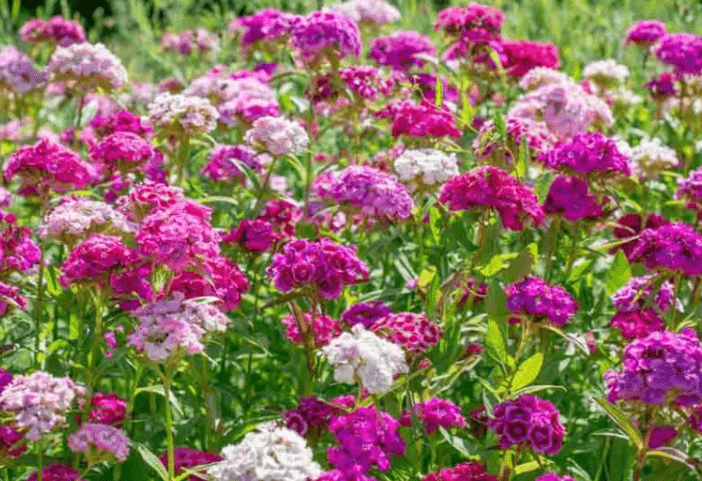
Dianthus chinensis (Chinese Pink)
Is a beautiful and fragrant flower that can be a great addition to any garden. When planting Sweet William, it is important to space the flowers about 12 inches apart to allow for proper air circulation, which can help prevent disease. It is also important to water the flowers regularly, keeping the soil evenly moist but not waterlogged. Overhead watering should be avoided, as it can lead to disease.
In the spring, it is recommended to fertilize Carnations with a balanced fertilizer to promote healthy growth and flowering. Deadheading the flowers by removing faded blooms can encourage new growth and prolong the blooming period. In the winter, cutting back the foliage to about 1 inch above the ground can promote healthy regrowth in the spring.
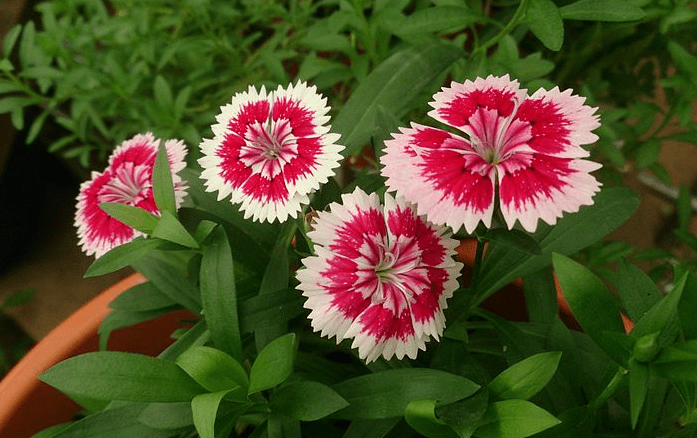
By following these planting and maintenance tips, you can enjoy the beauty and fragrance of Sweet William in your garden for years to come. Dianthus chinensis (Chinese Pink) is a lovely flower that can brighten up any garden with its vibrant colors and delicate fragrance.
Unique features and growing habits of each variety
Dianthus chinensis, also known as Chinese Pink, is a lovely flower that can brighten up any garden with its vibrant colors and delicate fragrance. It’s important to water the flowers regularly, keeping the soil evenly moist but not waterlogged. Overhead watering should be avoided, as it can lead to disease. In the spring, it is recommended to fertilize Carnations with a balanced fertilizer to promote healthy growth and flowering. Deadheading the flowers by removing faded blooms can encourage new growth and prolong the blooming period. In the winter, cutting back the foliage to about 1 inch above the ground can promote healthy regrowth in the spring. By following these planting and maintenance tips, you can enjoy the beauty and fragrance of Sweet William in your garden for years to come. Each variety of Dianthus has its own unique features and growing habits, so be sure to research and understand the specific needs of the type you are planting.
Ideal Growing Conditions for Dianthus Flower
Soil Requirements (type, pH, and drainage)
Dianthus flowers thrive in well-drained soil with a pH level of 6.0 to 8.0. They prefer sandy or loamy soil, but can also grow in clay soil as long as it is well-drained. It’s important to ensure that the soil is not waterlogged, as this can lead to root rot and other diseases. Adding organic matter such as compost can improve the soil structure and drainage. When planting Dianthus flowers, it’s important to choose a location with good air circulation to prevent the buildup of moisture, which can also lead to disease. By meeting these soil requirements, you can create an ideal growing environment for Dianthus flowers to thrive and bloom beautifully.
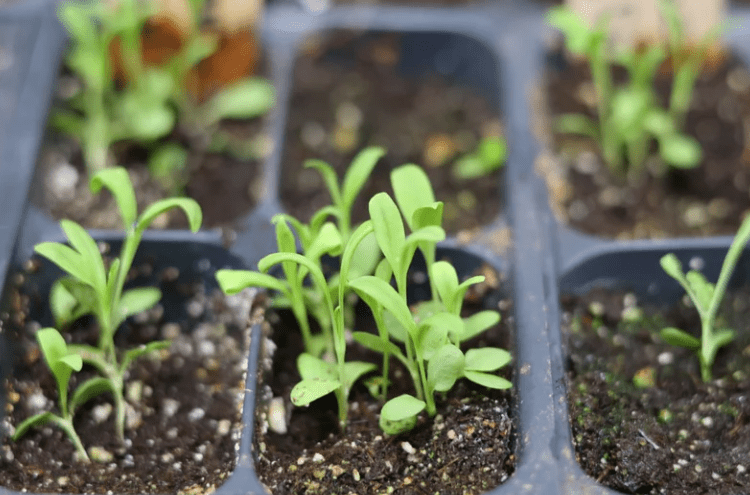
Sunlight Needs (full sun vs. partial shade)
Dianthus flowers thrive in well-drained soil with a pH level of 6.0 to 8.0. They prefer sandy or loamy soil, but can also grow in clay soil as long as it is well-drained. It’s important to ensure that the soil is not waterlogged, as this can lead to root rot and other diseases. Adding organic matter such as compost can improve the soil structure and drainage. When planting Dianthus flowers, it’s important to choose a location with good air circulation to prevent the buildup of moisture, which can also lead to disease. By meeting these soil requirements, you can create an ideal growing environment for Dianthus flowers to thrive and bloom beautifully. In terms of sunlight needs, Dianthus flowers prefer full sun, which means they need at least six hours of direct sunlight per day. However, they can also tolerate partial shade, especially in hot climates where some protection from the intense midday sun can be beneficial. Overall, providing the right soil conditions and sunlight exposure will help your Dianthus flowers grow and flourish.
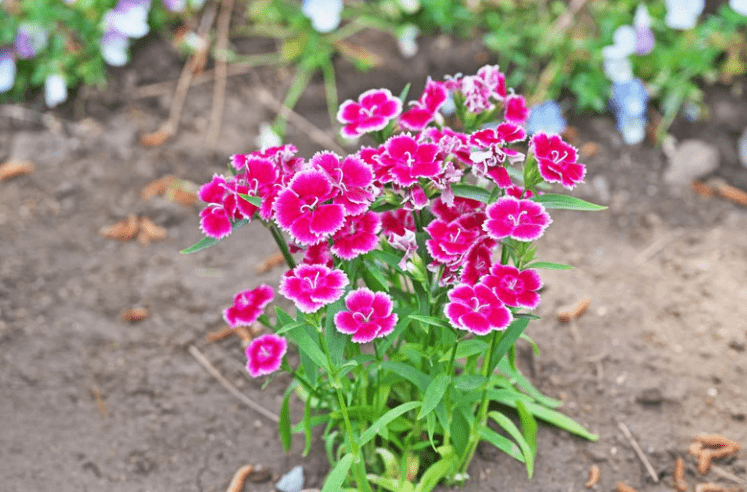
Watering Guidelines (frequency and amount)
When it comes to watering Dianthus flowers, it’s important to strike the right balance. These flowers prefer soil that is kept consistently moist but not waterlogged. In general, it’s best to water Dianthus flowers deeply once a week, providing about 1 inch of water. However, this can vary depending on the climate and soil conditions. For example, if you’re experiencing particularly hot and dry weather, you may need to water more frequently to keep the soil consistently moist. On the other hand, if you have heavy clay soil that retains water, you may need to water less often to avoid waterlogged conditions. It’s important to monitor the soil moisture and adjust your watering schedule accordingly. Additionally, it’s best to water the soil directly at the base of the plant to avoid getting the leaves wet, as this can lead to disease. By following these watering guidelines, you can help your Dianthus flowers thrive and stay healthy.
How to Plant Dianthus Flower
Best Time to Plant (Seasonal Considerations)
The best time to plant Dianthus flowers is in the spring or fall when the weather is cooler. This allows the plants to establish their root systems before the extreme heat of summer or the cold of winter. It’s important to choose a location with well-drained soil and full sun for optimal growth. When planting, make sure to space the Dianthus plants about 12 inches apart to allow for proper air circulation. Adding compost to the soil can also help with drainage and provide essential nutrients for the plants. After planting, water the Dianthus thoroughly to help settle the soil and encourage root growth. With proper planting and care, Dianthus flowers can add beauty to your garden throughout the growing season.
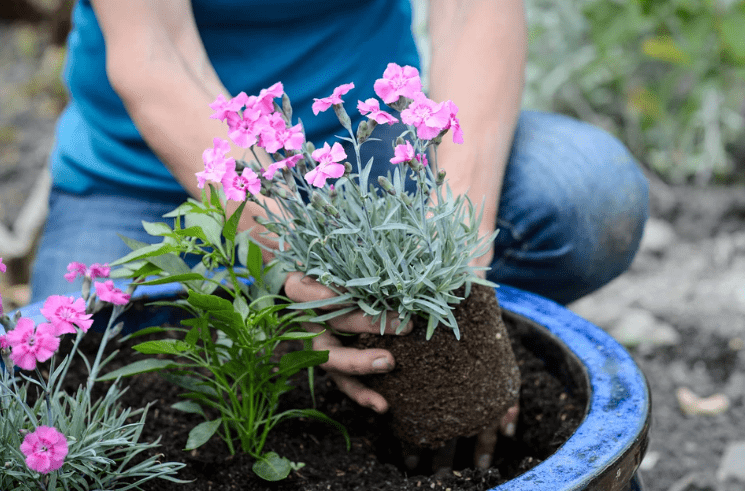
Step-by-Step Planting Instructions (seeds, seedlings, cuttings)
When planting Dianthus flowers from seeds, start by preparing the soil by loosening it and removing any weeds. Sprinkle the seeds over the soil and lightly cover them with a thin layer of additional soil. Keep the soil consistently moist until the seeds germinate, which usually takes about 1-2 weeks.
For planting Dianthus seedlings, dig a hole that is slightly larger than the root ball of the seedling. Gently remove the seedling from its container and place it in the hole, making sure the top of the root ball is level with the soil surface. Fill in the hole with soil and water the seedling thoroughly.
If you prefer to propagate Dianthus from cuttings, start by taking 3-4 inch stem cuttings from a healthy, established plant. Remove the lower leaves from the cutting and dip the cut end in rooting hormone. Plant the cutting in a container filled with well-draining soil and keep it consistently moist until roots develop.
No matter which method you choose, make sure to provide the Dianthus plants with regular water, especially during dry periods, and fertilize them every 4-6 weeks to promote healthy growth and blooming. With proper care, your Dianthus flowers will thrive and provide beautiful blooms in your garden.
Care and Maintenance
Fertilization Schedule (organic vs. chemical fertilizers)
When it comes to fertilizing your Dianthus plants, you have the option of using either organic or chemical fertilizers. Organic fertilizers, such as compost or manure, provide slow-release nutrients to the plants and improve soil structure. On the other hand, chemical fertilizers provide quickly available nutrients to the plants, but may also leach into the soil and harm the environment. It’s important to consider the impact on the environment and choose the option that best suits your gardening principles. Regardless of which type of fertilizer you choose, it’s important to follow a regular fertilization schedule to ensure that your Dianthus plants receive the nutrients they need for healthy growth and blooming. Aim to fertilize your plants every 4-6 weeks, following the instructions on the fertilizer package for proper application. By providing the right nutrients to your Dianthus plants, you can help them thrive and produce beautiful blooms in your garden.
Pruning and Deadheading for Continuous Blooming
Pruning and deadheading are important techniques to ensure continuous blooming in your Dianthus plants. Pruning involves cutting back the stems and removing any dead or wilted flowers. This encourages new growth and helps the plant to produce more blooms. Deadheading, on the other hand, involves removing faded or spent flowers from the plant. This prevents the plant from putting energy into seed production and instead encourages it to produce more flowers. By regularly pruning and deadheading your Dianthus plants, you can help them to continue blooming throughout the growing season. This will result in a more beautiful and vibrant garden. Remember to use clean and sharp pruners to avoid damaging the plants, and be sure to remove any diseased or damaged foliage to keep your plants healthy. With proper pruning and deadheading, you can enjoy a garden full of beautiful and long-lasting blooms.
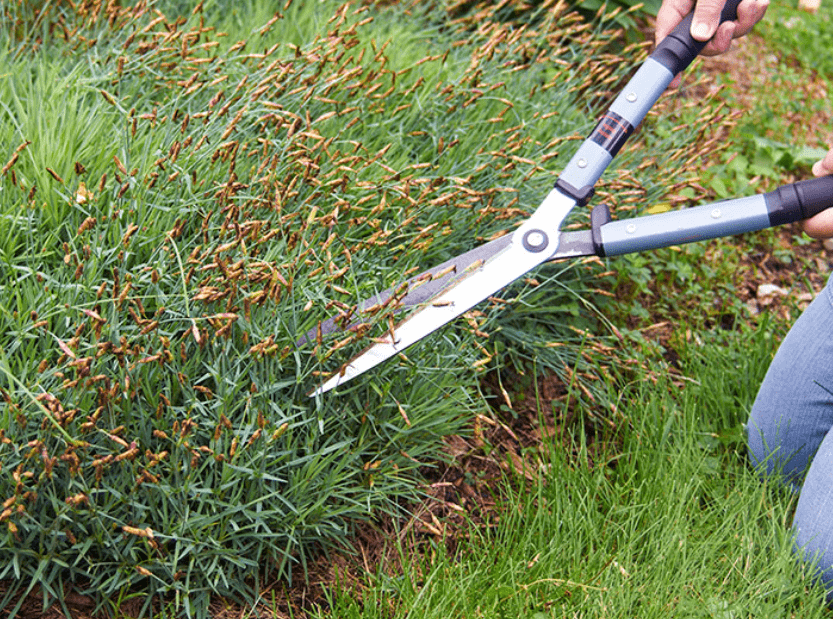
Managing Pests and Diseases (common issues and treatments)
When it comes to managing pests and diseases in plants, prevention is key. Regularly inspect your plants for any signs of pests or diseases and take action as soon as you notice any issues. Some common pests to watch out for include aphids, spider mites, and caterpillars, while common diseases include powdery mildew, leaf spot, and root rot.
There are several treatment options for managing pests and diseases, including using natural predators or insecticidal soaps to control pests, and fungicides or neem oil to treat diseases. It’s important to choose the right treatment for the specific pest or disease affecting your plants, and to follow the instructions carefully to ensure safe and effective treatment.
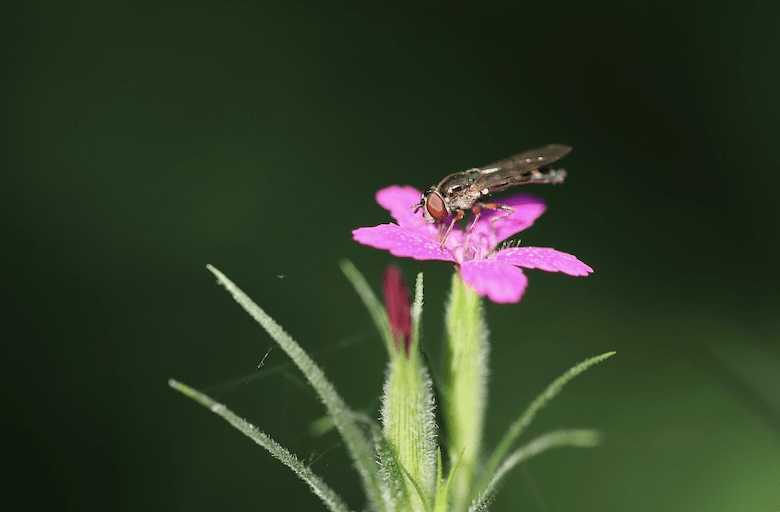
In addition to treating pests and diseases, it’s also important to maintain good plant health through proper watering, fertilizing, and pruning. Healthy plants are better able to resist pests and diseases, so be sure to provide them with the care they need to thrive. By staying vigilant and taking proactive measures, you can effectively manage pests and diseases in your garden and keep your plants healthy and beautiful.
Propagation Techniques
Are essential for gardeners to learn in order to expand their plant collection and keep their gardens thriving. There are several methods for plant propagation, including seed sowing, division, cuttings, layering, and grafting. Each method has its own specific requirements and benefits, so it’s important to choose the right technique for the plant species you are working with. When propagating plants from seeds, it’s important to provide the right growing conditions, such as proper soil, moisture, and temperature, to ensure successful germination. Division involves separating mature plants into smaller sections, each with its own roots and shoots, while cuttings involve taking a portion of a plant, such as a stem or leaf, and encouraging it to grow roots and form a new plant. Layering involves encouraging a stem to grow roots while still attached to the parent plant, and grafting involves joining the tissues of two plants together to create a new plant. By learning and mastering these propagation techniques, gardeners can effectively expand their plant collection and create healthy, beautiful gardens.
Common Problems and Solutions
Wilting or Yellowing Leaves
Are common issues that gardeners may encounter when caring for their plants. Wilting can be a sign of overwatering, underwatering, or root damage, while yellowing leaves can indicate nutrient deficiencies, overwatering, or even pests. To address wilting, it’s important to check the soil moisture and adjust your watering schedule accordingly. Make sure the plant is not sitting in waterlogged soil, as this can lead to root rot. For yellowing leaves, consider testing the soil to check for nutrient imbalances and adjust your fertilization routine. Additionally, inspect the plant for signs of pests and treat accordingly. By identifying the underlying cause of wilting or yellowing leaves, you can take the necessary steps to restore your plants’ health and vitality.
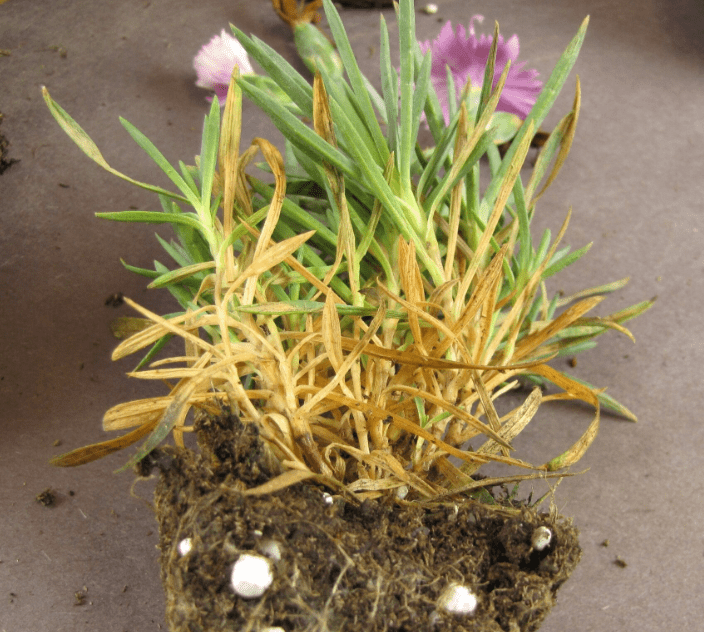
Poor Flower Production
Can be attributed to a variety of factors, including insufficient sunlight, improper watering, or nutrient deficiencies. To improve flower production, make sure your plants are receiving adequate sunlight for their specific needs. Some plants may require full sun, while others thrive in partial shade. Adjust your watering routine to ensure your plants are not being over or under-watered, as this can impact their ability to produce flowers. Additionally, consider testing the soil to identify any nutrient deficiencies and provide the necessary fertilization to promote healthy flower growth. Pruning your plants can also encourage more robust flower production by removing dead or overcrowded growth. By addressing these common issues and providing the necessary care, you can help your plants thrive and produce an abundance of beautiful flowers.
Benefits of Growing Dianthus Flower
Aesthetic Appeal in Gardens
The aesthetic appeal of gardens can be greatly enhanced by the beauty of Dianthus flowers. These flowers are known for their vibrant colors and delicate, fringed petals, making them a popular choice for adding visual interest to garden beds, borders, and container plantings. Dianthus flowers come in a variety of hues, including shades of pink, red, white, and purple, allowing for endless possibilities in creating stunning floral displays. In addition to their striking appearance, Dianthus flowers also offer a delightful fragrance, adding another sensory element to the garden atmosphere. Their compact, bushy growth habit makes them well-suited for edging pathways or filling in gaps between other plants, creating a cohesive and polished look in the garden. With their long-lasting blooms and easy-care nature, Dianthus flowers are a valuable addition to any garden, providing lasting beauty and charm throughout the growing season.
Fragrance and Attracting Pollinators
Dianthus flowers are not only visually stunning but also offer a delightful fragrance, adding another sensory element to the garden atmosphere. This fragrance can attract pollinators such as bees and butterflies, which play a crucial role in the pollination of plants. By attracting these pollinators, Dianthus flowers can help to support a healthy and thriving ecosystem in your garden. Additionally, the fragrance of Dianthus flowers can create a pleasant and inviting environment for you to enjoy while spending time in your garden.
In conclusion, Dianthus flowers are relatively low-maintenance and can bring vibrant color and fragrance to your garden. By following the tips and instructions provided in this article, you can ensure that your Dianthus flowers thrive and bloom beautifully. With the right care and attention, you can enjoy the beauty of these lovely flowers in your garden for years to come.
Frequently asked questions And Answer
The best time to plant dianthus flowers is in the early spring or fall, when the weather is cooler.
Dianthus flowers prefer well-drained, slightly alkaline soil.
Dianthus flowers should be watered regularly, especially during dry periods. However, it’s important not to overwater them, as they are susceptible to root rot.
Dianthus flowers thrive in full sun, so they should be planted in a location that receives at least 6 hours of sunlight per day.
Dianthus flowers can benefit from a balanced, slow-release fertilizer applied in the spring.
Deadheading dianthus flowers involves removing the spent blooms to encourage new growth and prolong the flowering period.
Dianthus flowers can be susceptible to aphids, spider mites, and powdery mildew. It’s important to monitor for these issues and take appropriate measures to control them.
Dianthus flowers can be successfully grown in containers, as long as the containers have good drainage and the plants receive adequate sunlight and water.
